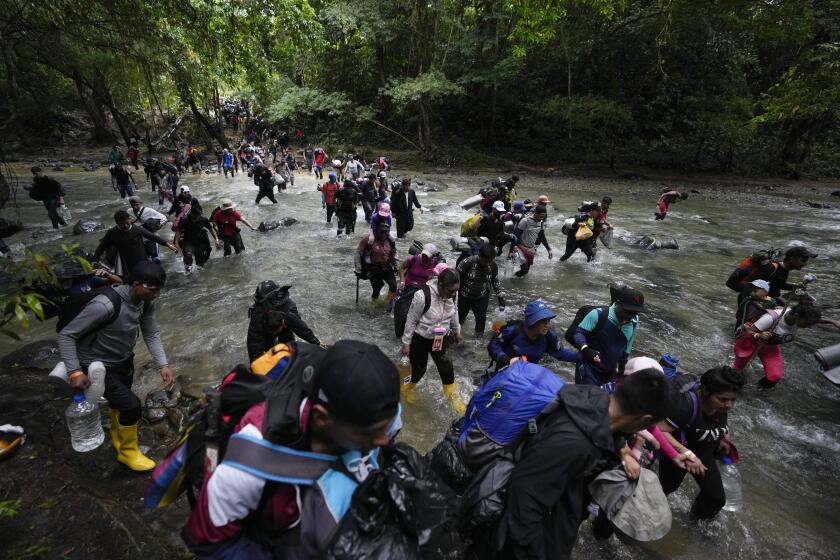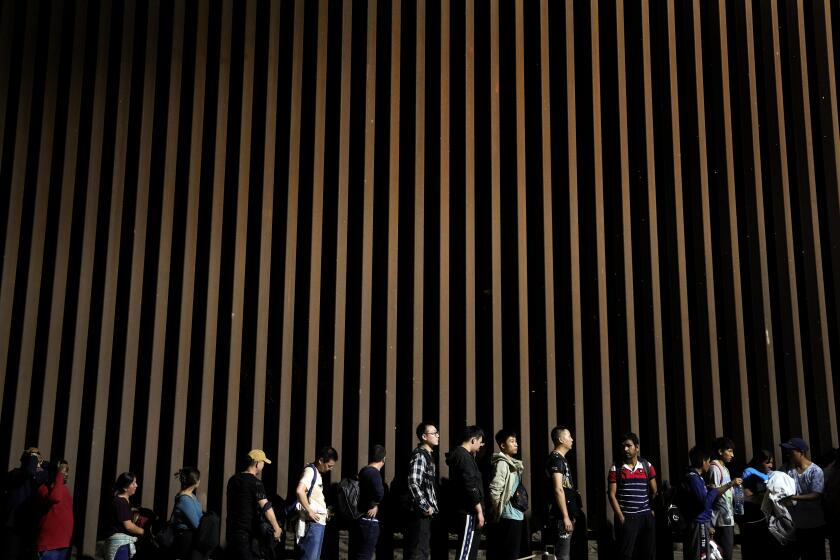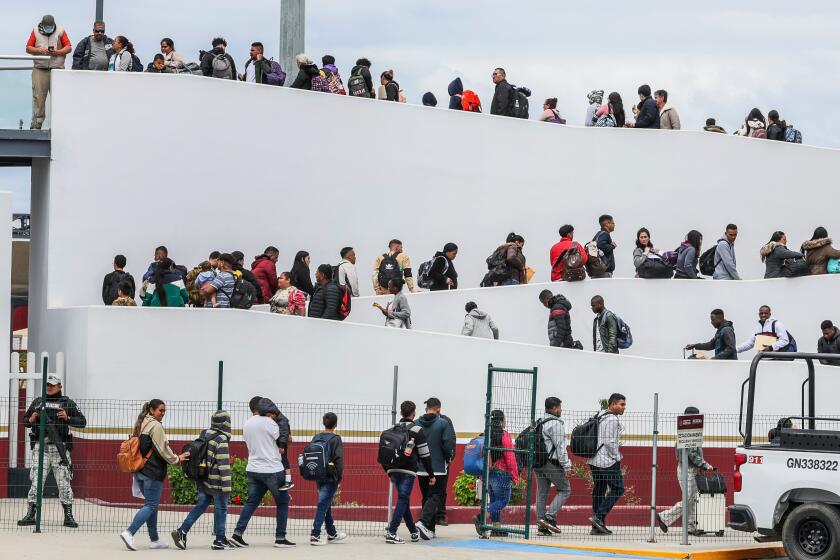INS Clarifies Policy on Border-Area Aliens
Moving to clear up widespread confusion, the U.S. Immigration and Naturalization Service said Thursday that illegal aliens arrested by U.S. authorities in border areas such as San Diego County will receive the same treatment as those apprehended in interior areas, and will be questioned to determine their potential eligibility for legal status under the new immigration law.
The only exception, said INS officials in Washington, are illegal aliens arrested after they have been observed crossing the border into the United States and are therefore unlikely to meet the residency requirements needed to qualify for legalization under the new law’s so-called “amnesty” provisions. But INS officials pointed out that even those recent entrants have the longstanding right to request hearings before immigration judges before being deported.
“Everyone will have the chance to make their case,” said Duke Austin, a spokesman for the INS in Washington.
Earlier this week, INS officials, responding to inquiries about new agency guidelines issued to implement the law, said it would be “business as usual” along border areas and that there were no plans to question illegal aliens apprehended about their possible eligibility for amnesty. The INS defines the border region for enforcement purposes as territory within 25 miles of the boundary, an area that would include most of metropolitan San Diego. The statements resulted in considerable confusion in the illegal alien community from California to Texas.
On Thursday, INS officials said that aliens arrested along the border will be questioned, and that if their answers reveal that they may qualify for amnesty, INS officers will issue temporary permits allowing them to remain in the United States until they can formally apply for amnesty next year. The formal application process is expected to begin next May.
Immigrant rights groups challenging the INS’s implementation of the new law have charged that the agency is enforcing a “double standard” along the U.S.-Mexico border region. The groups assert that illegal aliens--particularly in border areas--are being expelled without being questioned about whether they may qualify for amnesty, a policy that allegedly prevents some deserving immigrants from pursuing amnesty status.
“They (INS officials) are taking a very narrow view,” said Stephen Rosenbaum, an attorney with California Rural Legal Assistance Inc., which is representing plaintiffs in a lawsuit pending in U.S. District Court in Sacramento.
The new immigration law specifically bars the expulsion of illegal aliens who can demonstrate a “non-frivolous” or “ prima facie “ case for amnesty.
Immediately at issue along the border are new guidelines that went into effect last Friday in response to the new law, which President Reagan signed on Nov. 6. The guidelines contain a checklist of questions that INS officers must ask apprehended aliens to determine if the aliens are eligible for amnesty.
Considerable confusion resulted when the guidelines stated that “it will be business as usual” for border operations--a statement that appeared to exempt immigration agents along the 1,900-mile U.S.-Mexico border from asking the questions amnesty.
However, INS officials said Thursday that the “business as usual” section of the new guidelines refers only to aliens actually observed crossing the border illegally. All other illegal aliens apprehended in San Diego County and elsewhere in the vicinity of the border will be questioned to determine their eligibility for amnesty, Austin said.
Austin said the INS had received numerous requests for clarification of the issue after earlier comments indicated that aliens apprehended within the 25-mile zone north of the border would not be questioned about their prospects for amnesty.
Rosenbaum, the attorney representing the groups challenging the INS position, said the agency’s clarification does not fully satisfy his concerns. He noted, for instance, that many illegal aliens arrested after they have been observed crossing the border into the United States may have returned to Mexico only for “brief” or “casual” periods. The new immigration law specifically states that such “innocent” absences may not necessarily interrupt “continuous” residence requirements outlined under the new law’s amnesty provisions.
“We want as few people to fall through the cracks and miss out on amnesty as possible,” Rosenbaum said.
The new immigration law provides prospective amnesty for two broad groups of illegal aliens: those who have resided continuously in the United States since Jan. 1, 1982, and farm laborers who have worked in U.S. agriculture for at least 90 days during the 12-month period that ended on May 1, 1986.
A hearing on the lawsuit challenging the government’s implementation of the amnesty provisions is scheduled Monday in U.S. District Court in Sacramento.
Traditionally, the U.S.-Mexico border region has accounted for the great majority of illegal aliens arrested in the United States. In fiscal 1986, government figures show, 90% of the 1.7 million apprehensions occurred along the country’s southern border.
More to Read
Start your day right
Sign up for Essential California for news, features and recommendations from the L.A. Times and beyond in your inbox six days a week.
You may occasionally receive promotional content from the Los Angeles Times.






